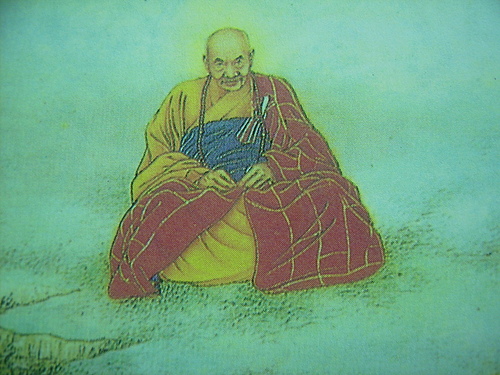THE THREE gunas – STABILITY, ACTION, AND INERTIA – HAVE FOUR STAGES: THE DEFINED, THE UNDEFINED, THE INDICATED, AND THE UNMANIFEST.
These three gunas have four stages. The first, Patanjali calls “the defined.” You can call it matter; that is the most defined thing around you. Then, “the undefined” – you can call it mind; that too is there, felt by you continuously, but is an undefined factor. You cannot define what mind is. You know it, you live it continuously, but you cannot define it. Matter can be defined but not mind. And then “the indicated” – the indicated is even subtler than the undefined: it is the self. You can only indicate it. You cannot even say it is undefined because to say something is undefined is, in a subtle way, to define it, because that too is a definition. To say that something is undefined… you have already defined it in a negative way; you have said something about it. So, then, there is this subtle layer of existence which is self, that is the indicated. And then beyond it there is again the subtlest which is “the unmanifest” – unindicated – that is, no-self.
So: matter, mind, self, no-self – these are the four stages of all these three gunas.
If you are deeply in lethargy you will be, like matter. A man of lethargy is almost matter, vegetates; you don’t find him alive. Then there is the second quality, mind. If rajas, activity, is too much, then you become too much of the mind. Then you are very, very active – mind is continuously active, obsessed with activity, continuously in search of new occupations. Somebody asked Edmund Hillary, who was the first man to reach the Everest peak, “Why? Why did you take such a risk?” He said, “Because the Everest peak was there, man had to go.” There is nothing…. Why is man going to the moon? Because the moon is there. How can you avoid it? You have to go. A man of activity is continuously in search of occupation. He cannot remain unoccupied, that is his problem Unoccupied he is hell; occupied he forgets himself.
If tamas, inertia, is too much, you become like matter. If rajas is too much you become mind: mind is activity. That’s why the mind goes mad. Then, if sattva is too much you become self, you become atma. But that too is an imbalance. If all the three are in balance then comes the fourth, the no-self. That is your real being where not even the feeling of “I” exists, that’s why the term “no-self.”
These are the four stages – three of un-equilibrium, and the fourth of equilibrium.
First is defined, second is undefined, third is indicated, fourth is not even indicated. unindicated; and the fourth is the most real. The first seems to be most real because you live in the first. The second seems to be very near because you live in the mind. The third even seems to be a little far away, but you can understand. Fourth seems to be simply unbelievable – no-self? Brahman, God, whatsoever you name it, seems to be very far away, seems to be almost non existential; and that is the most existential.
THE SEER, ALTHOUGH PURE CONSCIOUSNESS, SEES THROUGH THE DISTORTIONS OF THE MIND.
And that fourth, even if you attain it… while you are in the body you will have to use all the layers of your being. Even a Buddha, when he talks to you, has to talk through the mind. Even a Buddha, when he walks… he has to walk through the body. But now, once you have known that you are beyond mind, the mind can never deceive you: you can use it and you will never be used by it. That’s the difference. Not that a Buddha doesn’t use mind, he uses: he uses; you are being used. Not that he doesn’t live in the body: he lives; you are being lived – the body is the master and you are the slave. Buddha is the master; the body is the slave. A total change, a total mutation happens – that which is up goes down and that which is down goes up.
THE SEEN EXISTS FOR THE SEER ALONE.
This is the climax of yoga or vedanta: “The seen exists for the seer alone.” When the seer disappears, the seen, disappears, because it was there only for the seer to be liberated. When the liberation has happened it is not needed. This will create many problems because a Buddha… for him seen has disappeared, but for you it still exists. There is a flower, somebody amongst you becomes an enlightened person: for him the flower has disappeared, but for you it still continues. So how is it possible – for one it disappears and for you it continues?
It is just like this: you all go to sleep this night, you all dream; then, one person becomes awake – his sleep is broken, his dream disappears – but all others’ dreams continue. His disappearance of the dream does not help in any way for your dreams to be disturbed; they continue on their own. That’s why enlightenment is individual. One person becomes awakened; all others continue in their ignorance. He can help others to be awakened. He can create devices around you to help you come out of your sleep, but unless you come out of your sleep your dream will continue: “The seen, exists for the seer alone.”
ALTHOUGH THE SEEN IS DEAD TO HIM WHO HAS ATTAINED LIBERATION, IT IS ALIVE TO OTHERS BECAUSE IT IS COMMON TO ALL.
In India we have made only one distinction between dream and that which you call reality, and this is the distinction: that dreams are private realities and this reality that you call the world is a common dream, that’s all. When you dream you dream a private world. In the night you live a private life; you cannot invite anybody else to share in your dream. Even your closest friend or your wife or your beloved is far away. When you are dreaming you are dreaming alone. You cannot take anybody there; it is a private world. Then what is this world, because in India we have called this world also dreamlike? This is a common dream. We all dream together because our minds function in the same way.
Just go to the river. Take a straight stick with you; you know the stick is straight.
Push it down in the river: immediately, you see it has become crooked, bent. Pull it out; you know it is straight. Again put it in the water; it has again become bent.
Now, you know well that the stick remains the same, but the functioning of your mind and the functioning of the light rays create the phenomenon, illusion, that it has become bent. Even if you know now, still it will be bent. Your knowledge will not help. You know well, perfectly well, it is not bent, but it looks bent – because the functioning of the eyes and the light rays is such that the illusion is created. Then take a dozen friends with you: you all will see it bent. It is a common illusion. The world is a common dream.
THE SEER AND THE SEEN COME TOGETHER SO THAT THE REAL NATURE OF EACH MAY BE REALIZED.
THE CAUSE OF THIS UNION IS IGNORANCE.
To be united with this world. which is like a dream, to be united with the body, with the mind – which you are not – is a necessity. Through this union you will be prepared for a greater union. Through this union you will come to realize that this union is false. The day you realize that this union is false, the final union will happen.
When you are divorced from the world, you get married to the divine. When you are married to the world, you remain in a divorce from God. That’s why all the mystics – Meera, Chaitanya, Kabir; in the West, Theresa – they all talk in terms of marriage, in terms of bride and bridegroom. And they are all waiting for a final consummation.
The allegory has always been used. Psychologists have even become suspicious about it, about why mystics use that allegory of love, marriage, embrace, kiss. In India even sexual intercourse has been used as an allegory: when the final marriage happens there is the ultimate crescendo, the total orgasm of the individual with the whole, of the wave with the ocean.
Why do these people use sexual allegories? Psychologists suspect that there must be some repression about sex. They are wrong. There is no repression about sex, but sex is such a fundamental phenomenon, how can religion avoid it? It has to be used. And sex is the only, the deepest, phenomenon where you lose yourself.
You don’t know any other phenomenon where you lose yourself so completely.
And in God or in the total one loses himself completely – becomes a no-self. In sex just a little glimpse of it comes to you. It is good to use the allegory of marriage, of bride and bridegroom.
Remain married to the world and you remain divorced from the divine. Pass through the worldly experience – enriched, liberated – suddenly you become aware that this marriage was illusory, a dream. Now, the real marriage is getting ready for you. The bridegroom is waiting for you.
Tags: Patanjali Yoga Sutra 21 Four Stages










